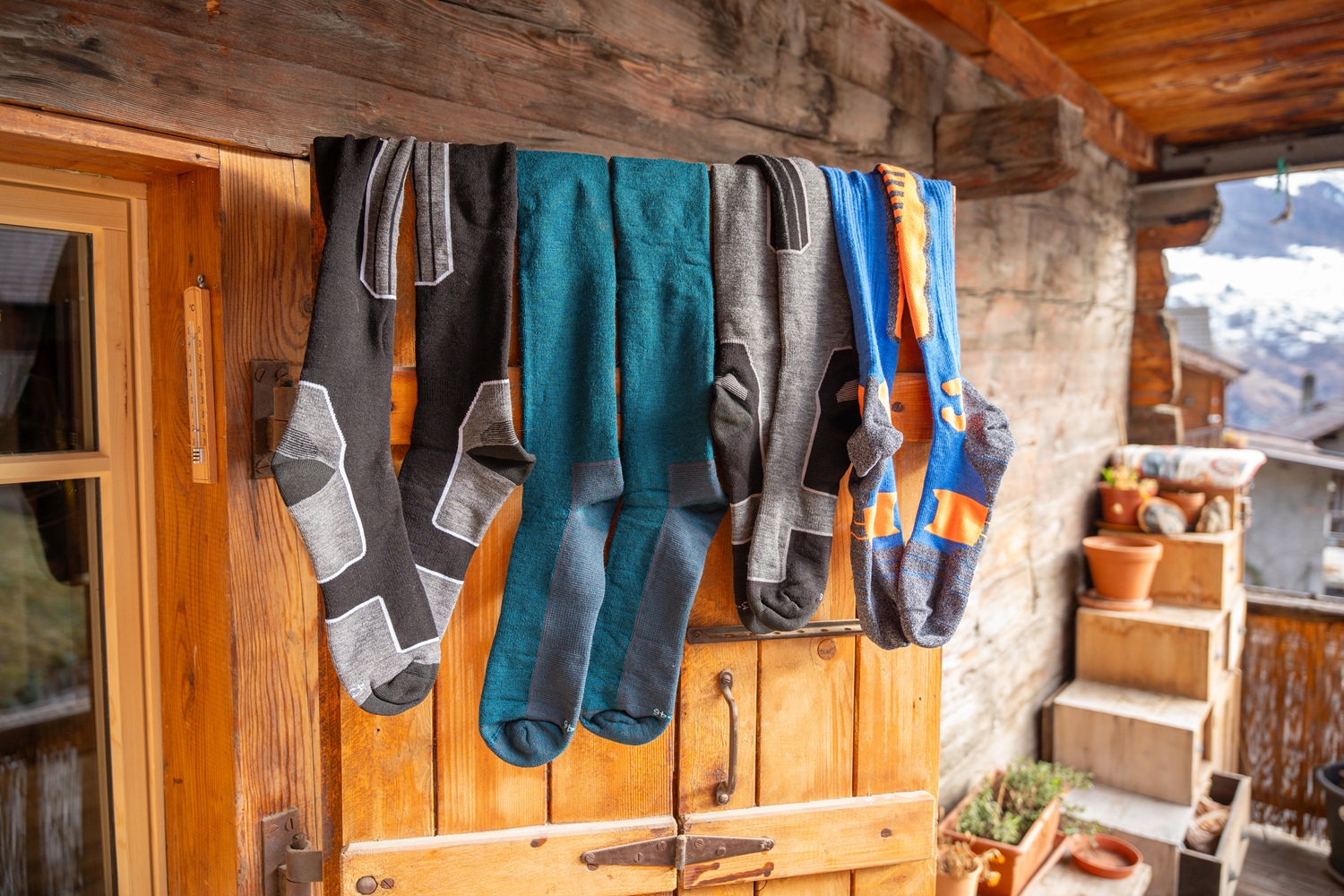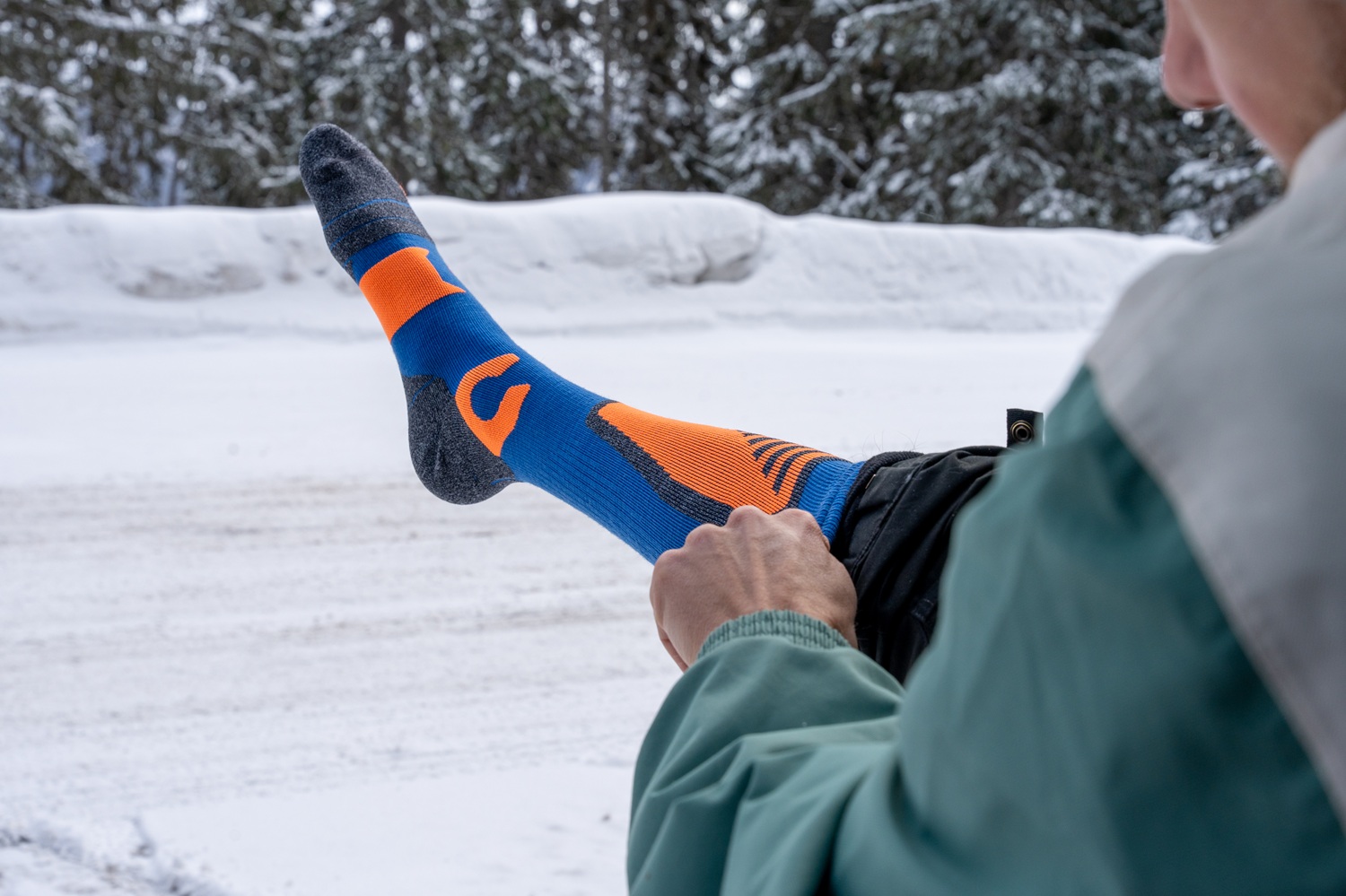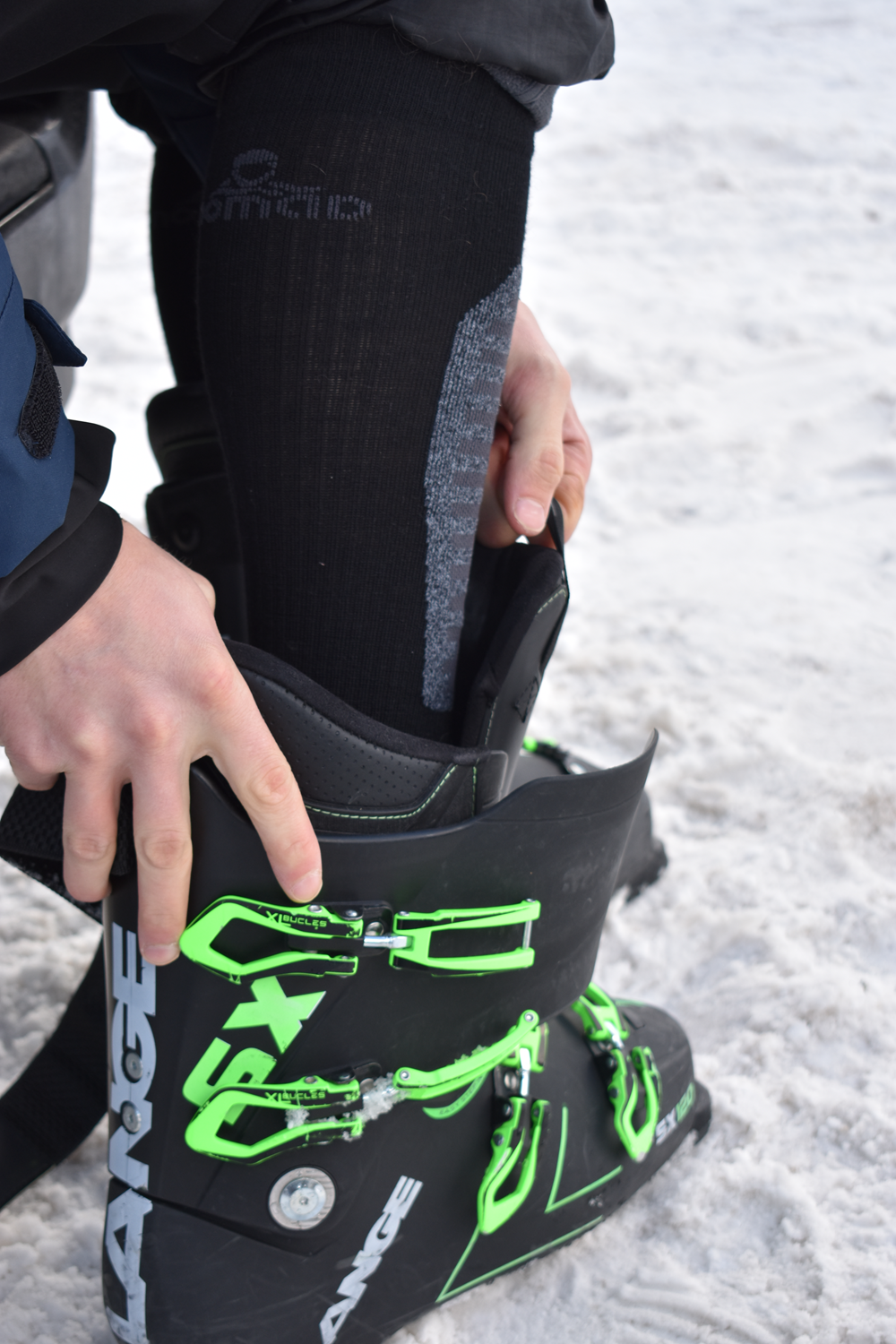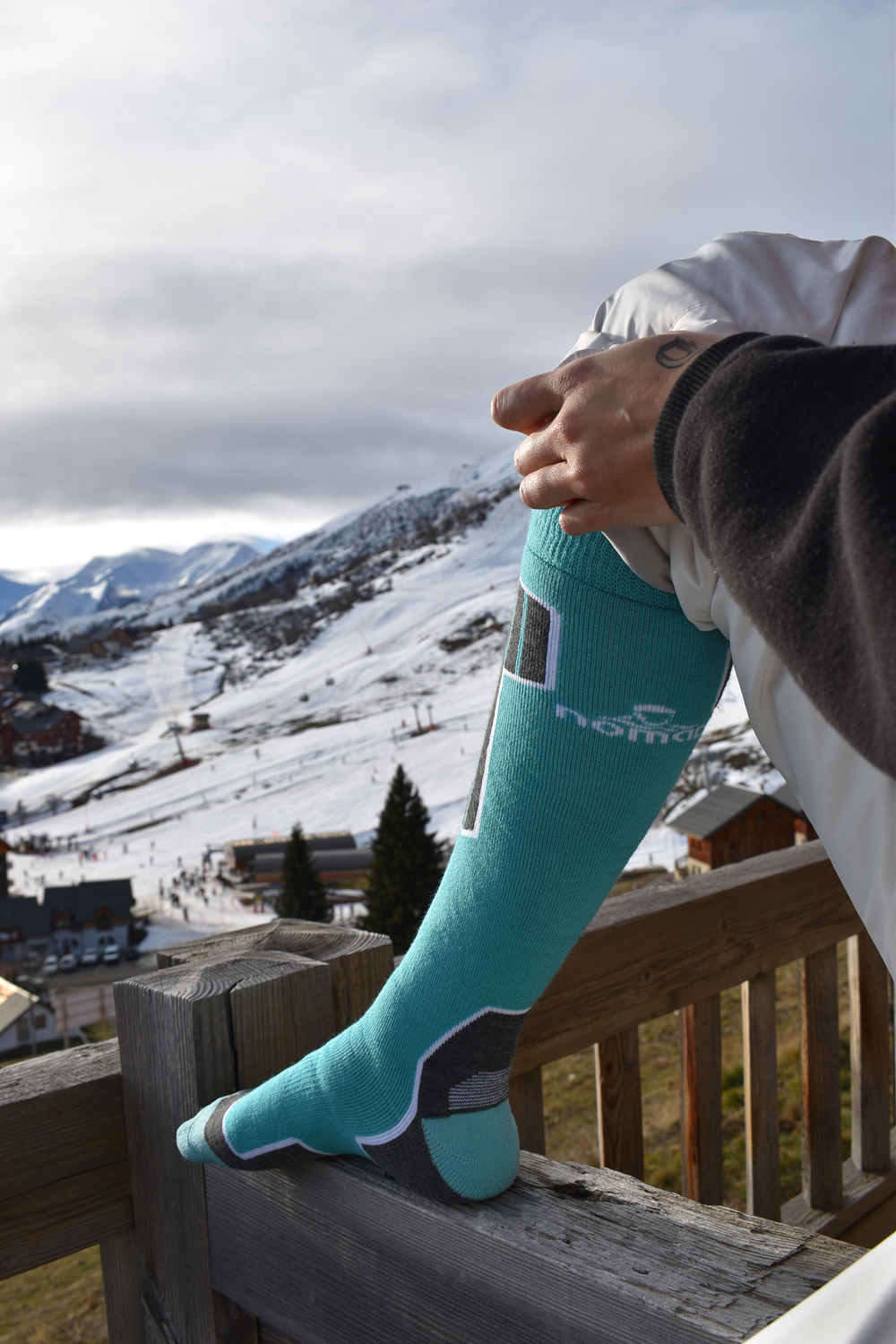How to choose the right ski socks: 5 essential tips
Preparing for a skiing trip? To make the most of your time on the slopes, comfort is key. The choices you make when getting dressed - or even earlier, when packing - can set you up for a great day or leave you struggling with discomfort. One crucial piece of gear is ski socks. The right pair can significantly enhance your skiing experience, while the wrong choice can lead to cold feet, blisters, and unnecessary fatigue.
First off, do you really need specific socks for skiing or snowboarding? Yes! Just like hiking socks are made to keep you comfortable on long hikes, ski socks are specifically designed for the demands of ski and snowboard boots and all-day activity. Every feature of a ski sock is carefully chosen to enhance performance, warmth, and comfort - offering a distinct advantage over regular warm socks. Here are five key factors to consider when choosing ski socks (scroll to the bottom for a quick guide):

Want to learn more about layering to stay warm and dry in cold weather? Check out our guide on the basics of layering.
1. Material
Skiing involves varying levels of intensity, often leading to perspiration. The ideal ski sock should keep your feet warm while maintaining breathability and moisture-wicking properties to prevent dampness. These are three main materials used in ski socks, and one to avoid:
Merino wool
- Naturally moisture-wicking and breathable
- Adapts to temperature changes (keeps you warm in the cold, cool when active)
- Soft, comfortable, and odor-resistant
- A premium option, but worth the investment
Merino wool excels in fluctuating conditions - whether you’re braving cold outdoor temperatures, working up a sweat, or taking a break indoors - it adjusts to your needs.
Synthetic blends
- High-tech fibers enhance wicking and drying properties
- More resistant to wear and tear than pure wool
- Often blended with elastane for a snug, stay-in-place fit
Many technical ski socks combine synthetic fibers to create high-performance designs. With the right combination of fibers, durability and enhanced moisture management are achieved, keeping feet dry and comfortable in various skiing conditions. Common synthetic fibers include polyamide (for durability), polyester (for moisture-wicking), acrylic (for softness), and elastane (for fit retention). Check out NOMAD Ski Sock Essential for our technical ski socks.
Wool and synthetic hybrid
A merino wool and synthetic hybrid combines the softness and insulation of wool with the durability and quick-drying capabilities of synthetics. This mix is an excellent balance between performance, warmth, and longevity. The NOMAD Ski Sock Premium and Pro line are crafted from merino wool and a synthetic blend for the best results.
Cotton
While cotton may seem like a comfortable option, it's less suitable for skiing adventures or any outdoor activities in general.
- Absorbs moisture and stays wet
- Leads to cold feet, blisters, and discomfort
- Lacks the insulation and quick-drying properties needed for outdoor sports

2. Fit
A proper fit is just as important as material selection. A poorly fitting sock can lead to blisters, discomfort, and reduced performance. A well-fitted sock has no excess material or bunching of material, which is crucial for minimizing friction and potential skin issues. If you're unsure about your size, we always advise to size down on a ski sock.
Anatomically shaped ski socks, with a left- and right-specific sock, is highly recommended. The compression is designed to match the natural contours of your foot and support the arch, heel, and ankle. This provides a more precise fit and helps to stabilize your feet and distribute pressure evenly inside the boots.
A last aspect to look into is the length of the ski socks. Your ski socks should be long enough to fully cover your calves and shins. Ideally, they should extend slightly above your ski boots to prevent blisters and chafing from boot pressure.
3. Compression
Another feature that distinguishes a good ski sock from a great one, is its compression. This can help with support, blood circulation, muscle fatigue, pressure points and swelling. Compression zones are strategically placed around the arch, ankle, calf, and shin to maximize comfort and performance.
4. Cushion
Ski socks come with different levels of cushioning (typically in the shin, heel, and toe areas) to absorb impact, reduce stress on your feet and lower legs, and help distribute pressure and prevent discomfort. The right amount of cushioning depends on your skiing style, boot fit, and comfort preference:
- Ultra-Light / No Cushioning → Best for performance skiers with well-fitted boots.
- Light Cushioning → Adds some protection while maintaining a precise fit.
- Medium Cushioning → Balances comfort and warmth for all-day skiing.
- Heavy Cushioning → Maximum warmth and protection but may reduce boot sensitivity.
5. Thickness
Ski socks vary in overall thickness, and thicker doesn't equal better in this case. When choosing the ideal ski sock thickness for you, consider your boot fit, skiing style, and personal preference.
- Ultra-Light (Thin) Ski Socks → Best for performance skiers, well-fitted boots, racing and warmer conditions.
- Lightweight Ski Socks → Best for all-mountain skiers, intermediate to advanced levels, with good boot responsiveness and balance of warmth, breathability, and support.
- Midweight Ski Socks → Best for casual skiers, cold conditions, slightly looser boots.
- Heavyweight Ski Socks → Best for extremely cold weather, backcountry skiing, snowboarding, looser boots.
Quick guide to choosing the right ski sock for you
|
Material |
|
|
|
Fit |
|
|
|
Compression |
|
|
|
Cushioning |
|
|
|
Thickness |
|
|


